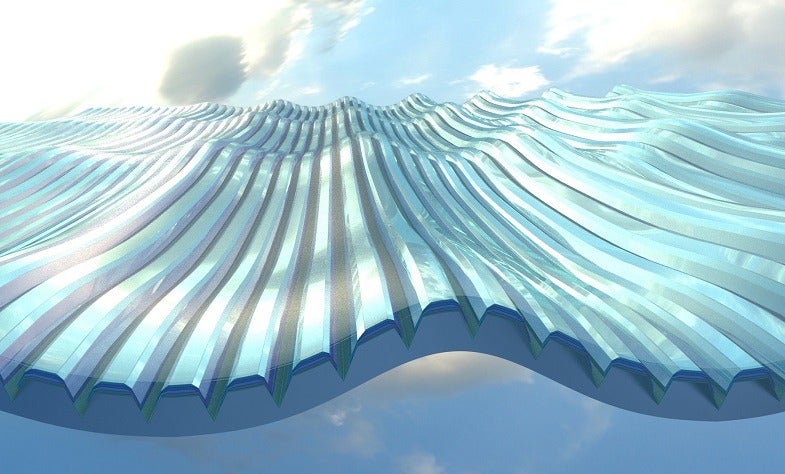
The new type of solar panels uses a surface embossed with hundreds of micro-grooves which have potential to make solar power more efficient.
The researchers said they could create a new type of back-contacted solar cell by coating opposing walls of micro-grooves with different electrical contacts, and filling the groove with a solution-processable semiconductor.
University of Sheffield department of physics and astronomy professor David Lidzey said: “There is global interest in using solar cells to generate low carbon, green electricity.
“The design of the back contacted solar module is both innovative and elegant, and can potentially reduce optical losses within the device.”
In addition to eliminating many of the manufacturing steps required by existing photovoltaics (PV) modules, the new 3D design allows new materials to be used which would not usually be appropriate in regular process.
Power Roll, which has already produced mini-module demonstrators, expects the new solar modules produced using new 3D design to weigh only a fraction of an equivalent-power conventional solar.
Other benefits of the new solar cell design include removal of costly transparent conductive oxides, and the use of simple and low cost electrical interconnections, making the equipment suitable for less developed and off grid areas, researchers said.
Lidzey added: “The devices we have demonstrated with Power Roll, have a promising efficiency, whereby seven per cent of sunlight power falling onto a single photovoltaic micro-groove device is directly converted to electrical power, this is already around a third of what the best performing but expensive solar cells produce today.”
Following completion of successful tests, Power Roll plans to focus on scaling up the technology ready for commercialization.
Power Roll CEO Neil Spann said: “We believe that our patented architecture is a game changer. The market opportunities for our solar PV product are significant, including off-grid solutions, commercial and domestic systems, powering the internet of things, portable power generation and military applications.
“This technology will deliver significant economic and social benefits to end users.”






